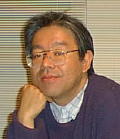June 30, 2003 – RFID Journal has learned that the Japanese government will allocate a portion of the UHF spectrum for use by RFID systems. The move paves the way for the global use of UHF tags to track goods in the supply chain.
UHF is critical to the widespread adoption of RFID because it’s the only frequency band that provides the extended read range needed to track goods in a supply chain setting. Most governments have already set aside 13.56 MHz for high-frequency RFID systems, which are suitable for applications where longer read ranges are not critical. But countries have not been able to harmonize the use of the UHF spectrum for RFID.
The United States and Canada use 915 MHz, and Europe uses 868 MHz. Most UHF tags can operate at both ranges, with a slight hit on performance. But Japan did not allow RFID tracking with UHF tags because the entire spectrum had been allocated for mobile phones, taxi and truck communications systems and a public wireless network for disaster prevention.
This week, the cabinet of Prime Minister Junichiro Koizumi is set to approve an IT strategy document that has been in the works for three years. The document calls for Japan to open up a portion of the UHF spectrum for RFID tracking. The document essentially represents marching orders for Japan’s powerful bureaucracy.
Given the importance the government is now placing on opening up the UHF spectrum for RFID, the Ministry of Public Management, Home Affairs, Posts and Telecommunications has responded by allocating a portion of the UHF spectrum — 950 to 956 MHz — for the use of RFID systems. This sliver had been allocated to a mobile phone company, but that company was not yet using it.
The breakthrough can be attributed in large part to the considerable influence of Jun Murai, director of the Auto-ID Center’s lab in Tokyo. Murai, a renowned computer scientist in Japan, is the vice chair of the Information Technology Strategy Council, which was set up three years ago to draft an IT strategy that would turn Japan into “a nation built on IT.”
The head of the council is Nobuyuki Idei, chairman and CEO of Sony Corp. Other members include such heavyweights as the president of NTT Corp. (Japan’s largest company and a member of the Auto-ID Center), the president of Toyota Motor Corp. and the president of NEC Corp.
The Japanese government will continue to try to open up a portion of the UHF spectrum that is closer to the US band (902 to 928 MHz), as part of the council’s recommendations. Finding a suitable frequency range closer to the bands used in the US and Europe would enable systems vendors to develop products optimized for to perform well around the world.
The decision by the Japanese government is significant because it paves the way for a truly global system of tracking goods using UHF tags. The rest of Asia will likely follow in Japan’s footsteps because Japan is such a powerful economic force in the region. China, in fact, is already looking to open up the UHF spectrum for RFID systems.
“The decision to use some part of the 900 MHz spectrum [in Japan] is a strategic change that opens up the possibility for global RFID technology deployments,” Murai told RFID Journal. “It’s an important breakthrough.”


